Estimated reading time: 4 minutes
We love weeds under fruit trees!
It might seem a bit strange when we’re constantly taught that weeds are “bad”. The very way the word is used often conjures up images of threats to the environment and to farming.
Related Articles
Animals, fruit trees, and electric fences
Animals and fruit trees go well together if you can figure out how to enjoy the benefits without the animals doing too much damage.
To mulch or not to mulch under your fruit trees?
Mulching under fruit trees is not as good as living understory, but has its place for young trees, or for mature trees if done correctly.
3 simple ways to improve your soil
Here are 3 simple ways to kickstart the health of your soil to help you grow fruit that is full of vitamins and minerals.
But weeds (or understorey plants as we prefer to call them), can provide lots of environmental benefits:
- weeds shade the ground and keep it cool
- they prevent evaporation from the soil
- they provide habitat and food for the bees
- provide food underground for the soil microbes that are so important for the fertility for our trees, and
- take carbon out of the air and pump it into the soil.
And that’s just the beginning of the list of wonderful things about them!
The downside to weeds under fruit trees
Before you start thinking we’re a bit “Pollyanna” about our weeds, we do acknowledge that there can be a downside to them.
They use water and nutrients. Grasses in particular can be overly competitive for water. They provide habitat for pest insects as well as beneficial ones.
They can also provide easy ‘ladders’ into the tree for ants, earwigs, and garden weevils.
Some weeds are definitely preferable to others, so it pays to make sure you’ve got the right ones.
Like most things in gardening and farming, deciding what to do with your weeds is a matter of weighing up the pros and cons. Overall, the pros of weeds far outweigh the cons.
Getting benefits from understorey plants
To get the maximum benefit from weeds, don’t let them get too long, and try not to let them go to seed.
As long as your weeds keep actively growing, they are pumping carbon into the soil. The best way to keep the weeds growing is to regularly cut them short.
Unfortunately for most gardeners, that means one of the jobs in spring and summer is having to mow around your fruit trees regularly.
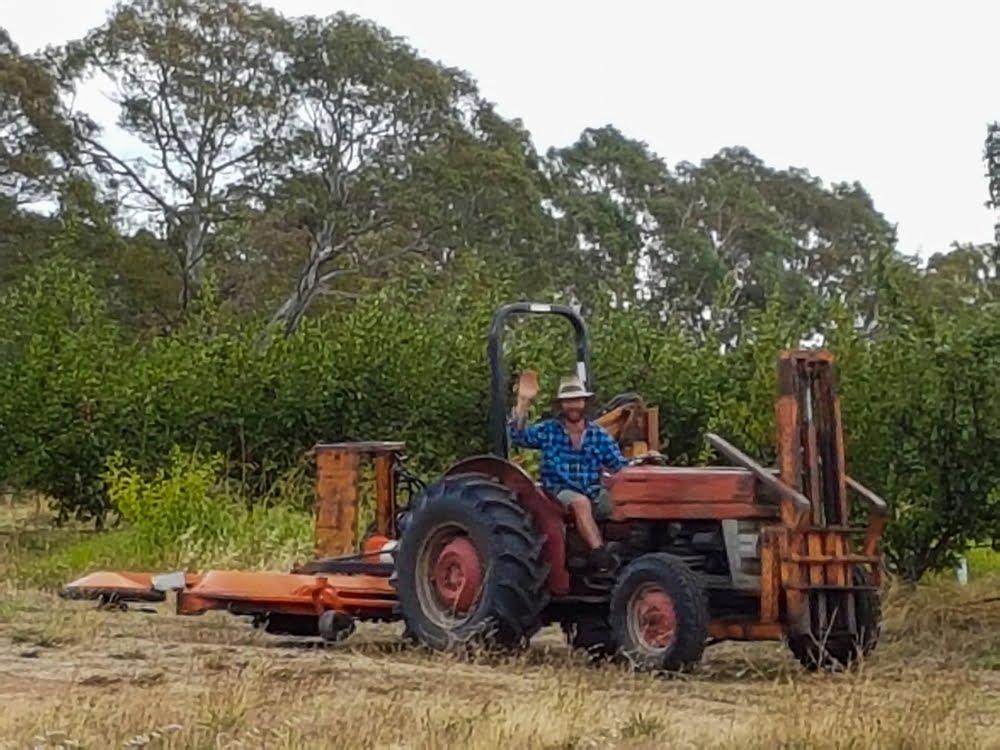
When you’re mowing, don’t cut the grass too short. Leaving enough height on the plants helps them to stay in their growing phase.
On a home garden scale, it’s probably easier to use a whipper-snipper or brush cutter.
If you’re trying to live a low-carbon lifestyle, you might want to consider using an electric tool rather than using fossil fuels.
If you’re really keen, consider learning how to scythe instead of using a power tool at all!
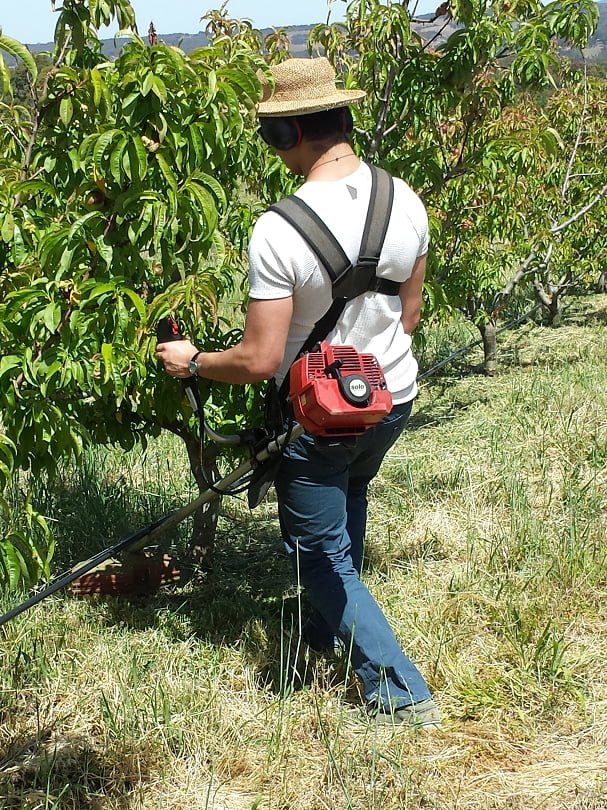
Control weeds with animals
The best plan of all is to use some animals to eat the grass.
The aim is to mimic what would be happening in the natural world. Before we imposed fences on the country, animals would move freely through the landscape grazing the seasonal grasses.
Because they could move on to fresh pastures, they never grazed it too short. Once the crops recovered, they’d come back and have another go.
Managed well, animals can completely remove your work of mowing. Admittedly, it replaces it with the work of looking after animals, but your fruit trees will love you for it.
Plus, they get the extra benefit of all that lovely juicy grass being turned into natural fertiliser.
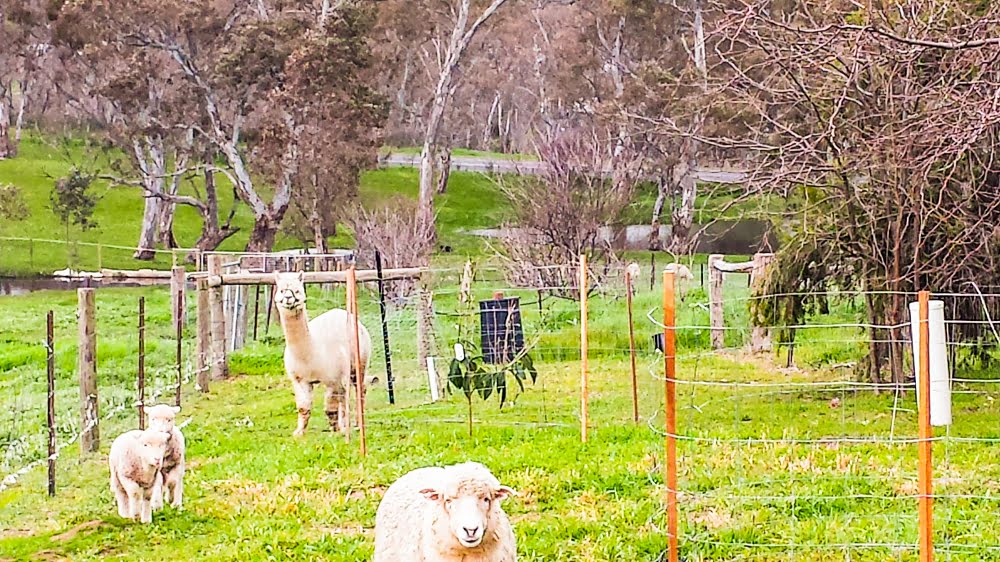
Whether you’re looking after the grass with tools, by hand with scything, or with animals, the aim is to mimic the natural model.
That way you’ll be protecting your soil and using it to store as much carbon as possible!
Related Articles
Animals, fruit trees, and electric fences
Animals and fruit trees go well together if you can figure out how to enjoy the benefits without the animals doing too much damage.
To mulch or not to mulch under your fruit trees?
Mulching under fruit trees is not as good as living understory, but has its place for young trees, or for mature trees if done correctly.
3 simple ways to improve your soil
Here are 3 simple ways to kickstart the health of your soil to help you grow fruit that is full of vitamins and minerals.

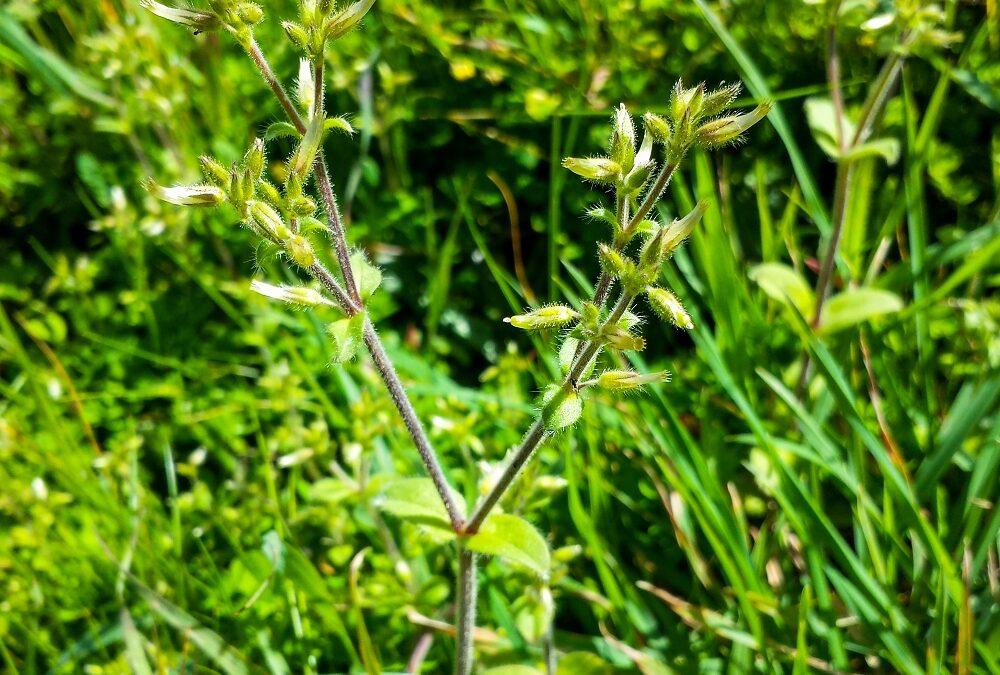
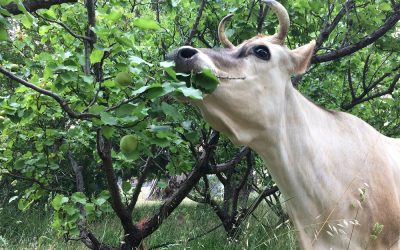




I have been hand-chopping back all the lovely weeds under our fruit trees since coming to visit your orchard for the Farmer Incubator workshop. I was wondering if this was the right thing to do, so this post was very timely – thank you!
Great Kate, good to hear that you’re preserving your weeds rather than pulling them out! It was great to have you at the farm for the workshop, nice to catch up.
We let the chooks into the orchard, no mowing now required, but we have kept them out now that fruit is ripening, but if i move them back in in the winter, there is no hope of establishing herbs or companion plants. I have thought of guinea pigs, but guessing they would do similar damage. Thoughts?
Sounds like the chooks are working well Christine, and yes guinea pigs would probably work similarly well. One of our GGF members has had good success with protecting the understory plants from the chooks with a range of measures including chicken wire over groundcovers, little enclosures around shrubs, upside-down buckets etc. Bottom line is there’s a lot of trial and error with your specific system/animals/enclosure to figure out what’s going to work for you.
Many thanks for this article on the benefits of keeping weeds under fruit trees. I certainly find that it IS far nicer to have ‘grass’ in our home orchard (especially if it is green), but I’ve always been concerned about the amount of our precious water that is being ‘wasted’ on grass rather than in fruit production. Thank you for your insightful contribution to changing how we think about weeds. Is there any books you would recommend on this? For example, are there limits to accepting weeds into your property? Do I stop my removal of blackberries, cape weed, Pattersons Curse, thistles,……? Are there ‘good weeds’ and ‘bad weeds’? What am I not getting here….?
Hi Peter, some of the things that might push you towards deciding that a weed is “bad” would be things like: is it noxious (and therefore you have responsibility as a landowner to control it), is it invasive (and therefore likely to spread and out-compete plants you would prefer to have growing there), is it useful to me (or could I grow a more useful plant(s) in its place), and even – do I like it? There’s more info about our whole approach to weeds in this short course – https://growgreatfruit.com/product/learn-to-love-your-weeds/, and 23 common ‘weeds’ are featured (with common uses) in this short course – https://growgreatfruit.com/product/weed-therapy/
One idea is to replace weeds with a green manure crop, which will feed the soil once it completes its life cycle. There are a whole range you could try. Another alternative could be trying to replace weeds with native grasses, but many of these get quite tall so would need slashing or grazing.
Great input Kat, thanks! It’s also great to think about perennial plants for the understory as it saves having to replant them each year.
I use pea straw as my understory for fruit Trees. The peas have grown so large they have fallen over. Should I cut them in half as you suggested? They also house snails!!!!
Maria
The point of cutting them is to try to keep them growing for longer Maria, so you could try it – but with an annual crop like peas they’re more likely to just stop growing – maybe you could do an experiment and report back to us!